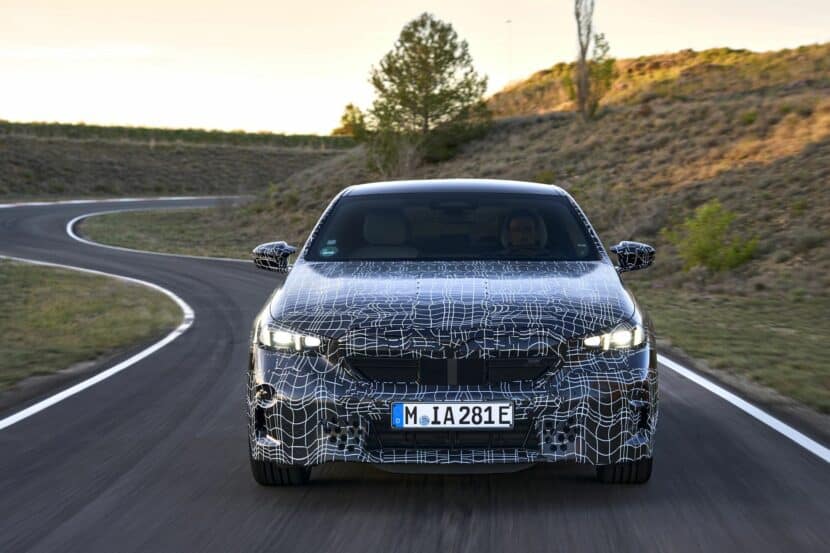BMW M5's Weight Disaster: Why the i5 M60 Could be the Unexpected Hero

The automotive world is buzzing with conversations about the newly unveiled 2025 BMW M5, also known as the G90. This beast packs more power and torque under its hood than any previous M5 model. Yet, there's a catch—while it boasts a more potent plug-in hybrid engine, the G90's weight is its Achilles' heel. Tipping the scales at a whopping 5,390 pounds (2,445 kilograms), the G90 is over 1,000 pounds heavier than its predecessor, the F90, and this heft comes with some notable performance drawbacks.
Surprisingly, the G90 isn't any faster off the line. In fact, it's a tad slower than the F90 model. Even more startling is its weight comparison with some of BMW’s current models. Heavier than the G05 X5 in its various forms and even the G70 7 Series, the G90's mass surpasses several of BMW's electric vehicles, including the i5 M60, which weighs a relatively svelte 5,081 pounds (2,305 kilograms).
The Elephant in the Room: Weight Issues

More mass is every driving enthusiast's nemesis. Increased weight makes a car more cumbersome, instigates violent weight transfer during cornering, hampers braking performance, and makes sharp turn-ins an engineering challenge. Though BMW's engineers have excelled in minimizing the apparent weight of their vehicles, the G90's mass throws a spanner in the works, making one question whether the i5 M60 might actually be a more agile performance car.
Weighing around 300 pounds less than the M5 G90, the i5 M60 benefits from its heavy battery pack, strategically placed between its axles and low to the ground. This arrangement provides it with a lower center of gravity and less weight over the front axles, which should, in theory, make it more nimble around twisty roads.
Weight Distribution: An Unbalanced Equation

The G90 BMW M5's weight is skewed heavily toward the front axle, upending BMW's coveted 50/50 weight distribution. On the contrary, the i5 M60 boasts a near-ideal balance, with 50.1% over the front and 49.9% over the rear axle.
Performance metrics highlight the i5 M60's capabilities: with 601 horsepower and 604 pound-feet of torque from its dual electric motors, it charges to 60 mph in 3.6 seconds. Though its electronically-limited top speed of 143 mph means it won’t win any autobahn sprints against a 320d diesel variant, its low-end torque delivery could make it a better corner carver than the M5.
In contrast, the G90's hybrid setup melds a 585 hp V8 with a 197 hp electric motor, culminating in 717 horsepower and 737 pound-feet of torque. This hybrid powerhouse reaches 60 mph in 3.4 seconds and hits a top speed of 190 mph with the optional M Driver’s package. Yet, despite these impressive figures, the i5 M60 could still edge out the M5 on a winding road, thanks to its lighter weight and more immediate power delivery.
A Track-Tested Heavyweight: G90's Track Performance

We had the opportunity to drive the G90 around a track, and it's clear BMW has made magic happen. Despite its bulk, the car feels unexpectedly light and agile, turning in with surprising eagerness. This feat is achieved through meticulous calibration of controls, powertrain, electronic aids, and an exceptional suspension system, complemented by rear-wheel steering.
However, the G90 isn’t without its drawbacks. The car exhibits noticeable body roll in corners and requires extra braking distance due to its heft. If you’re a track enthusiast transitioning from an F90 to a G90, you’ll have to recalibrate your braking points because the G90 demands more time to slow down.
Handling vs. Drama: i5 M60 Around the Track

When it comes to track performance, the i5 M60 offers a different kind of thrill. It lacks the visceral drama of a turbocharged V8, but this can be an advantage. Free from the complexities of managing turbo spools, power bands, and gear shifts, drivers can focus solely on the i5’s handling. Its responsive nature ensures it won’t disappoint in the corners.
The mere fact that we're comparing an i5 with an M5 speaks volumes about the i5’s capabilities. The G90 M5, despite its burdensome weight, remains an enthusiast's dream, primarily due to its colossal engine. Yet, the i5 M60 emerges as a compelling option, especially for those prioritizing agility over raw power.
So, which 5 Series performance variant catches your fancy now that the M5 has gained so much weight? Does the i5 M60's lighter, more balanced nature sway you, and are you excited about the future of high-performance plug-in hybrids from BMW and Mercedes? Let us know your thoughts in the comments below.